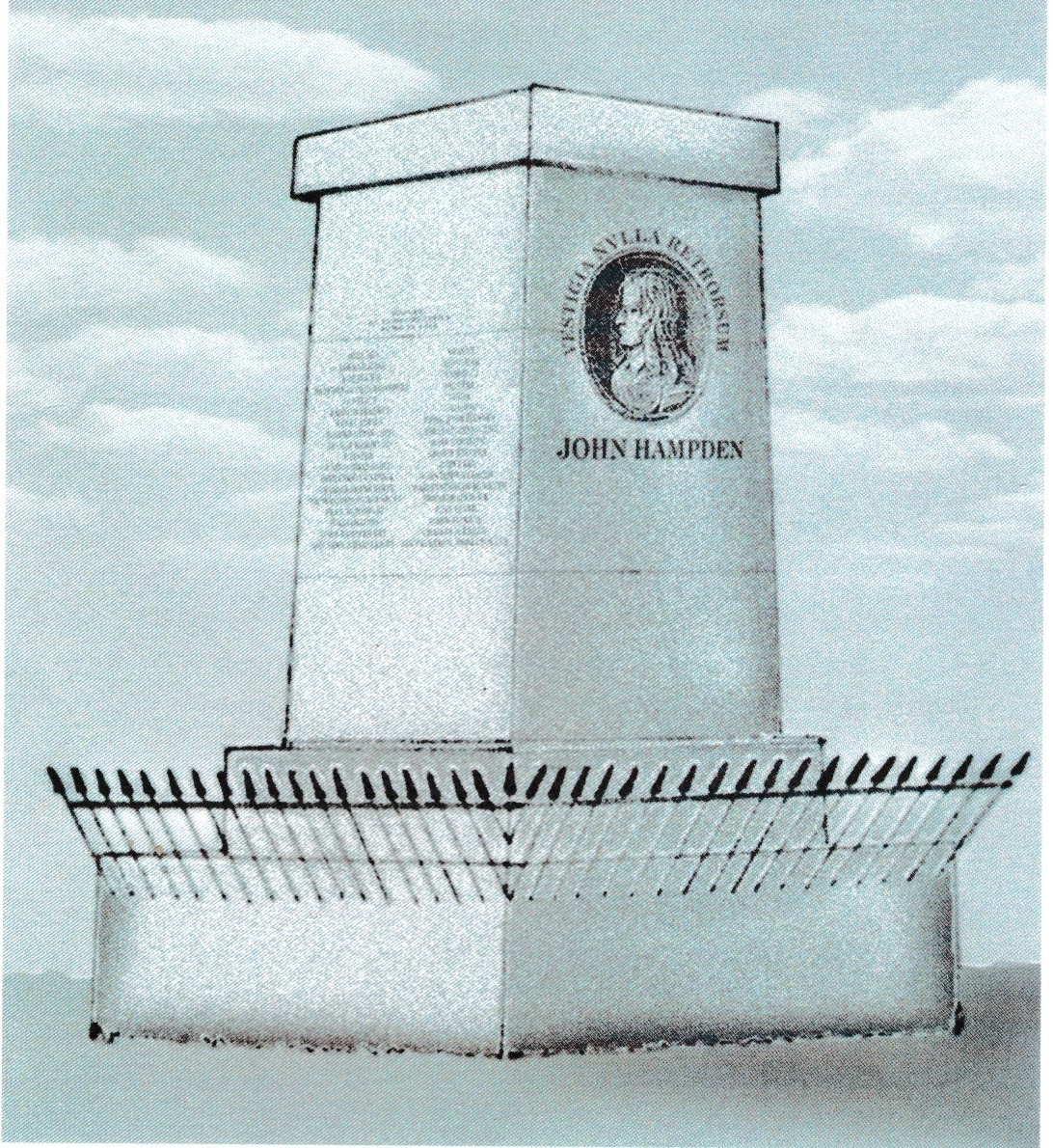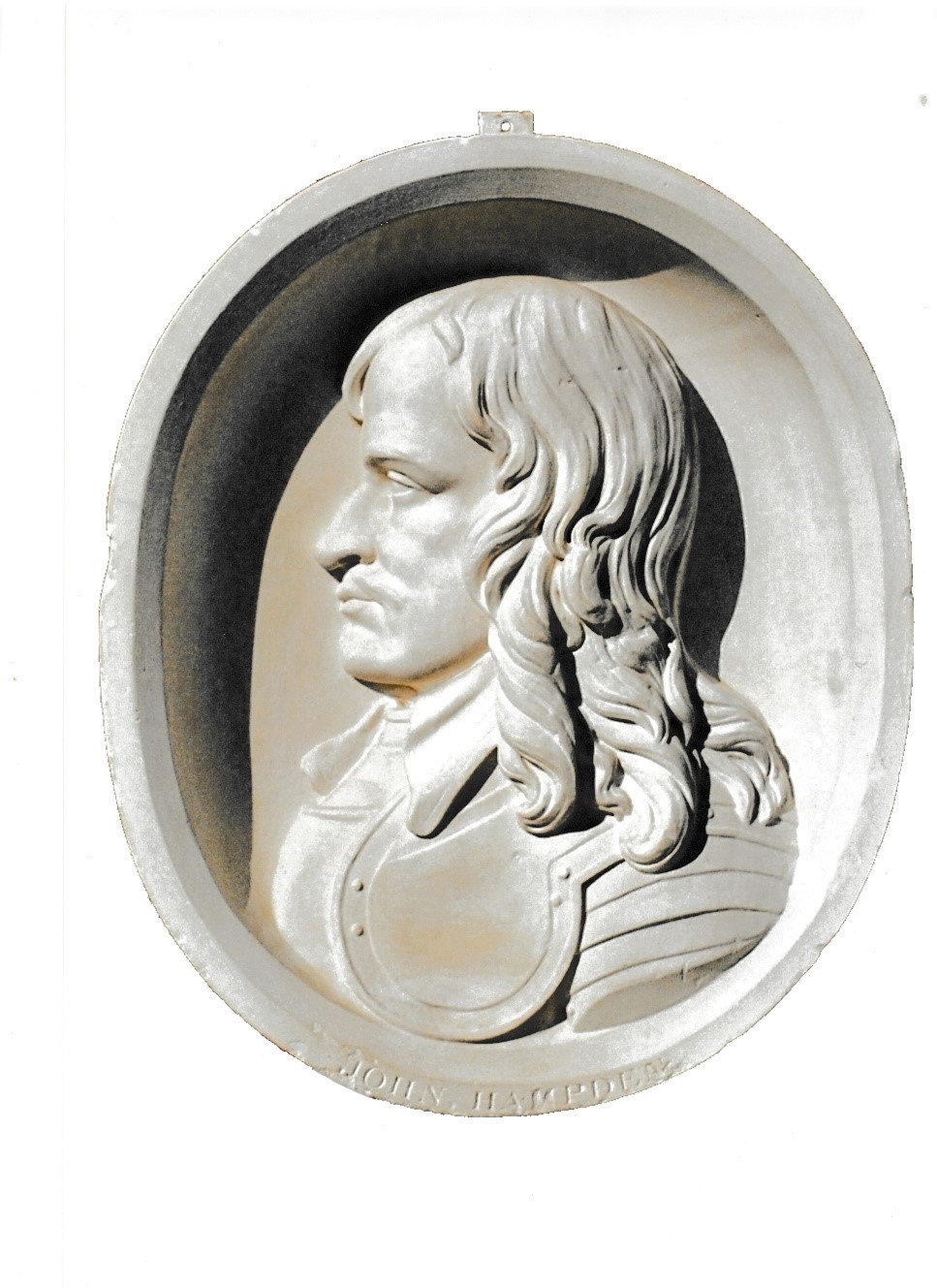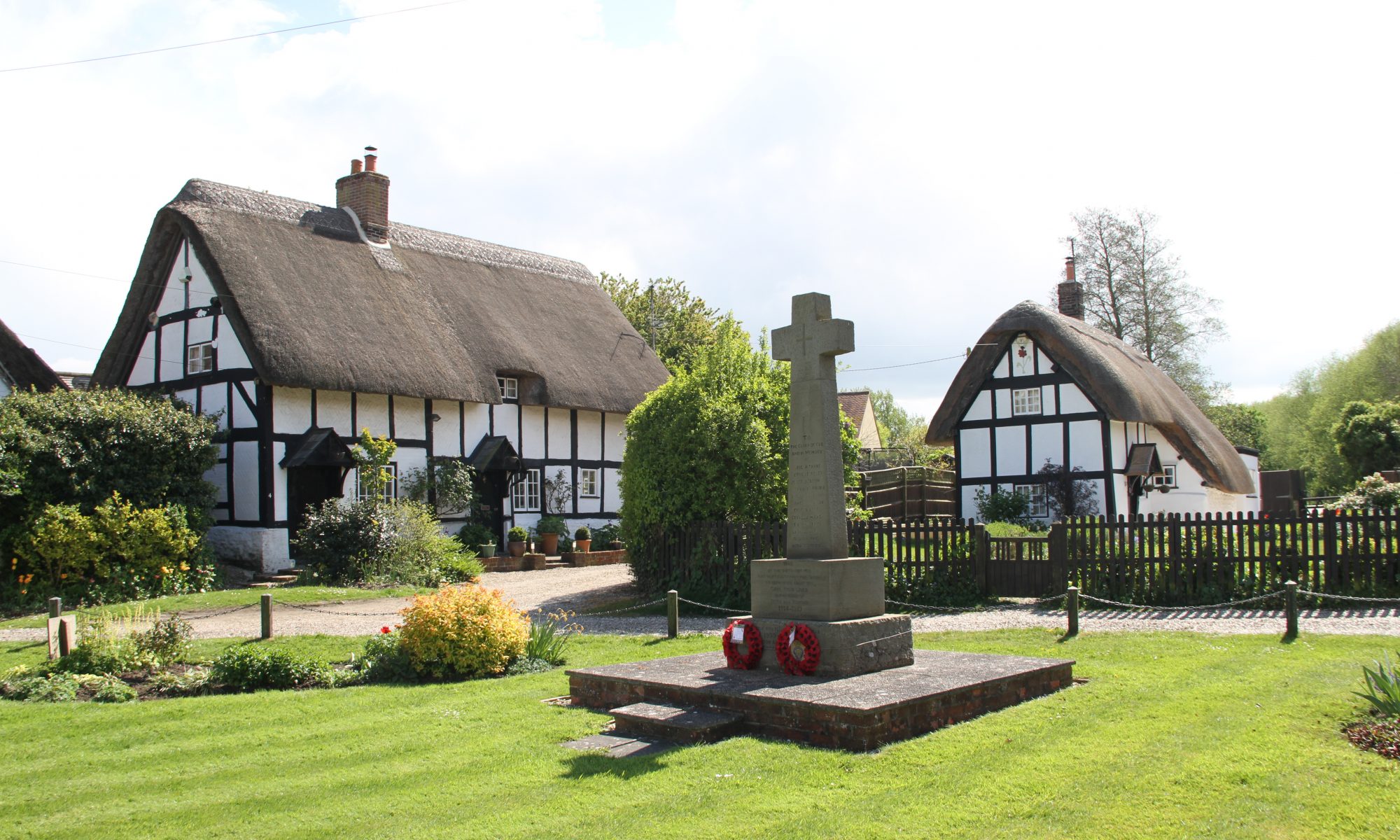John Hampden’s Monument was erected in 1843, the 200th anniversary of the battle of Chalgrove, to celebrate the life of John Hampden who was mortally wounded in the encounter. The Monument was as can been seen in the image below without the capstone or the railings when it was first erected. The railings around the base of the Monument pointing out at an angle represent pikemen in a defensive pose. As a last ditch manoeuvre to save the Regiment’s Standard the pikemen formed a chiltron not too dissimilar to that displayed at the Monument’s base.

The Times, Tuesday 20th June 1843 published, “The memorial has not the slightest pretension to architectural beauty. It is a plain pillar of brickwork faced with Portland stone, 18 feet high, tapering towards the summit and surmounted with a small cap of stonework. It is mounted on a pedestal about ten feet square, and surrounded by a neat iron railing the whole being erected on a mound of turf, slightly raised above the surrounding fields, and enclosed by a fosse or ditch containing water. The point of land on which it stands is the junction of the four crossroads to the village of Chalgrove, Oxford, Hasely, and Watlington, It is supposed to be erected near the spot where Hampden fell, and a group of trees at a few hundred paces distant are pointed out as the ambush from which the patriot was wounded by the musket ball of a skirmisher attached to the Royal army”. Supposedly near the spot they wrote, aware that Lord Nugent stated in his book ‘his’ battle site was near Golder Hill.
On the western side of the pillar is the following inscription :- “HERE// IN THIS FIELD OF CHALGROVE// JOHN HAMPDEN// AFTER AN ABLE AND STRENUOUS// BUT UNSUCCESSFUL RESISTANCE// IN PARLIAMENT// AND BEFORE THE JUDGES OF THE LAND// TO THE MEASURES OF AN ARBITARY COURT// FIRST TOOK ARMS// ASSEMBLING THE VOICES OF THE ASSOCIATED COUNTIES// OF BUCKINGHAM AND OXFORD// IN 1642// AND HERE// WITHIN A FEW PACES OF THIS SPOT// HE RECEIVED THE WOUND OF WHICH HE DIED// WHILE FIGHTING IN DEFENCE// OF THE FREE MONARCHY// AND ANCIENT LIBERTIES OF ENGLAND// JUNE 18 1643// IN THE TWO HUNDREDTH YEAR FROM THAT DAY// THIS STONE WAS RAISED// IN REVERENCE TO HIS MEMORY”
The northern side has a recess in which is inserted a medallion bust of John Hampden, in white marble by Scoular, a pupil of Westmacott. The name of the patriot is immediately beneath the medallion, and the family motto, “Vestia nulla restrorsum,” surmounts it. The Latin roughly translates to ‘Never a Backward Step’. Plaster cast moulds of the medallion were made and sold as souvenirs.

On the east side are the names of those who raised the subscription with which the monument was erected. These names follow the words ”Raised by subscription, June 18, 1843.” Among the names are the following :- (In the left hand column) BEDFORD// BREADALBANE// HAMPDEN BUCKINGHAMSHIRE// LOVELACE// F.BURDETT// HENRY AUSTIN// ROBT. OTWAT CAVE// GEORGE DASHWOOD// NUGENT —- (In the right hand column) JOHN HAMPDEN// REV. R. HAMPDEN D.D.// SUDELY// LEIGH// COLBOURNE// JOHN LEE// CHARLES T D’EYNCOURT// SIR J EASTHOPE// J T LEADER
On the southern side are placed the Hampden Arms the motto being ‘Vestia Nulla Restrorsum’.
The Trevor’s claim to the Hampden estates was tenuous and when the 5th Earl died the threat that Renn Dickson Hampden DD, the Bishop of Hereford, could claim ancient descent ensured the 6th Earl was diligent to establish his right. Renn Dickson Hampden DD had donated the land on which the monument was erected. George Hampden Cameron added the capstone and chiselled his claim into the Monument. Under the marble sculpture is inscribed – ‘THIS MONUMENT WAS REPAIRED AND COMPLETED BY GEORGE HAMPDEN CAMERON ESQ. THE PRESENT OWNER OF HAMPDEN ESTATES A DESCENDANT OF THE PATRIOT JOHN HAMPDEN THROUGH HIS DAUGHTER MARY WIFE OF SIR JOHN HOBART BART ] AND BY SIR HENRY EDMUND AUSTEN OF SHALFORD IN THE COUNTY OF SURREY ANOTHER DESCENDANT OF JOHN HAMPDEN THROUGH JULIANA DAUGHTER OF RICHARD HAMPDEN THE PATRIOT’S SECOND SON 1863’. The Monument after 1863 remained unchanged except when Chalgrove airfield was built across the old road and the curved road was put in to help the buses turn left into the village. It was further isolated when the by-pass was built.
Pictorial evidence shows the outside railings around the Monument were erected by 1880 and a photographic postcard taken in 1913 shows them again. In 1943 members of the Cromwell Association painted the railings to mark the Monument’s hundredth anniversary. John Hampden’s Regiment from the English Civil War Society also painted the railings in 2001 and replaced some missing stakes. Moira Ruth Calvert, nee Hampden offered the ownership of the Monument to the Oxford County Council in 1956. Without a bursary for its upkeep they refused the bestowal. Correspondence flowed between them until 1987, but always with the same refusal. Chalgrove Parish Council was offered the title and on the 1st July 1988 this was officially accepted. Ken Batley was the Chairman who accepted the Monument for the sum of £1.00 on behalf of Chalgrove.
JOHN HAMPDEN MONUMENT. Ken Batley
‘When the last of the Hampdens, Moira Calvert, decided to hand over responsibility for the upkeep of the Hampden Monument to another body Chalgrove Parish Council were happy to accept this chore. The chairman of the council at this time was Ken Batley and he said that although Hampden had no direct link with the village the two would always be historically associated.
In his statement he remarked that the Monument was built in two stages on the corner of a field abutting the Warpsgrove Road from the village and the main Oxford/ Watlington road and protected from wandering cattle and other farming impedimenta by iron railings. This site was chosen purely because of its availability and, despite the claim on its face, the site of the obelisk was proved to be some distance from the actual site of the battle. However, there it stands today commemorating the battle where Hampden received his mortal wound.
The name of Hampden has rightly echoed down the centuries and is known today for the estate that grew up around the airfield following the Second World War, the present day industrial estate, the former village hall and one of the village roads that has helped to swell the population of this small then unimportant village that Hampden himself knew. So his name lives on.
Back to Battle of Chalgrove Main Page.

